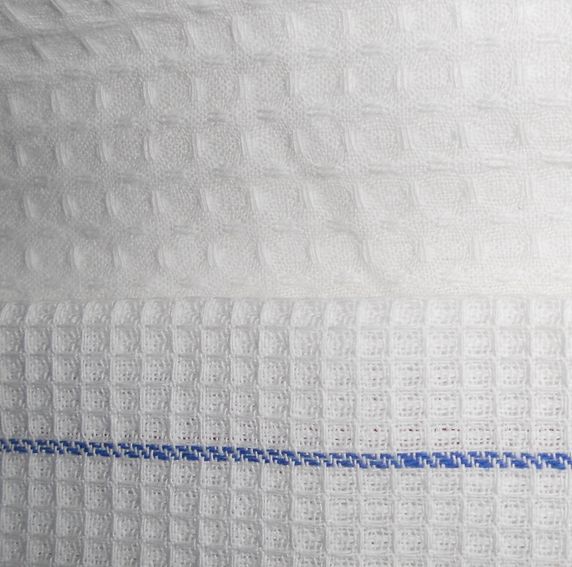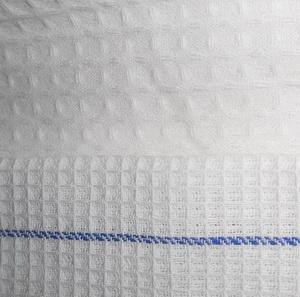Original text by Marina Belova
Several days ago I bought waffle weave towels and came up with the idea of attaching the embroidered eyelets to them (you can download the design here). Observing the textured surface I like so much, a question popped up in my head: are there any special rules for embroidery on this fabric?
It's not that I've never before embroidered on this cloth. I actually had more than once. It's that I've never thought what one could do to with it to get the embroidery of a high quality. It turned out that waffle cloth is not at all scary, on the contrary, it's rather stable. That is, if you don't count the cheap and loosely-woven waffle cloth that has a very low density and needs to be approached from a different angle as a consequence. Read more about loosely woven fabrics here.

The technique is actually simple and not really different from a standard procedure:
- Hoop the fabric together with a backing (a middle-weight tear-away stabilizer will be just fine) and a water-soluble film on top. If you're trying to cut down expenses, I'm sure that you can do without the topping or simply put on top of the design a piece of a corresponding size. A tear-away stabilizer can be additionally secured with a temporary spray adhesive.
- You can use threads of any thickness and structure.
- Choose the needles with SES points, their thickness matching the thread thickness.
Digitizing a machine embroidery design for the waffle cloth
The process of creating a design or choosing a ready one for this fabric will be defined by its texture:
- Avoid light-weighted designs executed in running stitches or containing a low-dense fill. (Though, in my opinion, this is a moot point.)
- Do not embroider small letters directly on the fabric but on an underlay.
- Standard density values are best: 0.4–0.45 mm will be sufficient to thoroughly cover the fabric. Density could be reduced due to the use of understitching.
- Use stitches under 7 mm long, as usual. Anything longer than that should be split. For the fills, I'd recommend using stitches no longer than 4–4.5 mm. At any rate, the designs I'd embroidered looked better that way.
- When working with a textured fabric, the most important thing is not to forget the underlay that will even the surface and maintain the edges.
- Under thin satins – an edge run.
- Under the satins from 2.5 to 7 mm – a zig-zag + an edge run.
- Under the fills – a grid at 90° or a full grid at 45° and 135°, 3 mm stitch length + an edge run.
- Compensation should be kept at a standard level of 0.4 mm.
It is beyond dispute that the fabrics differ in texture, density, and stability. For that reason, all of the above figures should only be regarded as a benchmark that may and should be modified for every particular design.
P.S. Some interesting information from Deborah Jones concerning waffle cloth. She strongly encourages to wash the towels prior to the embroidery. The reason for this is a very high level of shrinkage (about 10%). In her video, she proves that washing before the embroidery is necessary for the light-weight designs like redwork but not so crucial for the ordinary dense ones.
Edited by Irina



There are no reviews to display.